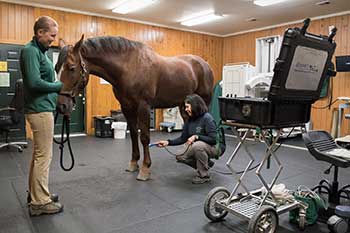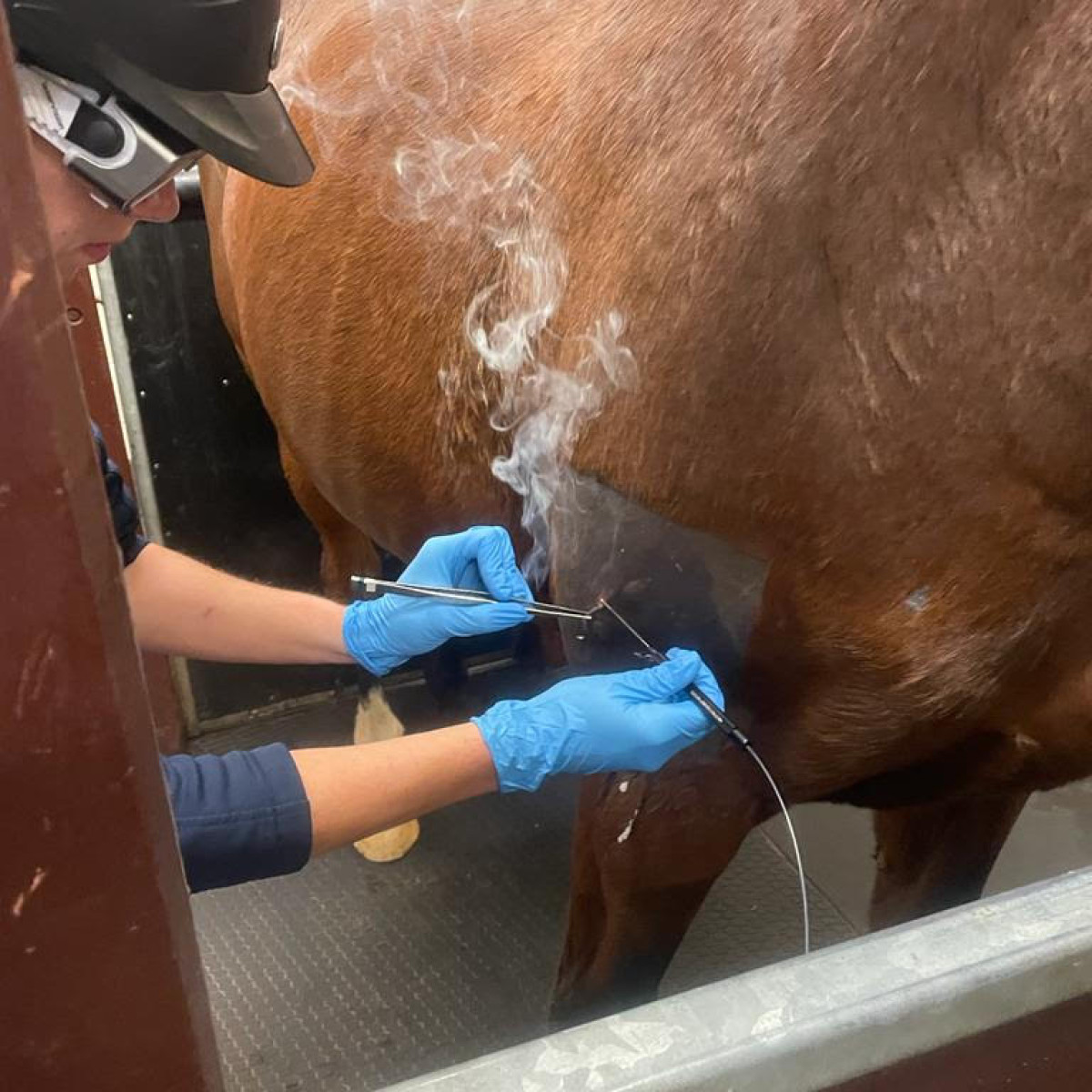Everything You Need to Understand About Equine Therapy for Mental Wellness
Wiki Article
Just How Laser Treatment in Horse Therapy Is Reinventing Veterinary Look After Equines
Laser treatment has actually arised as a transformative method in equine vet treatment, giving a non-invasive solution that accelerates healing and enhances overall health and wellness. The portability and adaptability of laser therapy tools even more highlight their growing indispensability amongst veterinarians.Comprehending Laser Therapy

The innovation behind laser treatment is grounded in the concept of photochemistry, where photons are absorbed by chromophores within cells, causing enhanced ATP production and modulation of reactive oxygen types (Equine Therapy). This, in turn, promotes mobile spreading, decreases swelling, and speeds up healing. Vet practitioners utilize various kinds of lasers, consisting of low-level lasers (LLLT) and high-power Class IV lasers, depending on the details therapeutic goals and the nature of the equine problem being treated
Various laser wavelengths and power settings are very carefully selected to target various cells depths and achieve preferred clinical outcomes. Safety methods are vital, as inappropriate use can cause thermal damages or suboptimal restorative results. Hence, a thorough understanding of laser therapy's devices and applications is critical for its reliable implementation in equine vet technique.
Benefits for Equine Health
The myriad advantages of laser therapy for equine health and wellness include boosted recovery, discomfort decrease, and improved mobility. This innovative therapy method leverages certain wavelengths of light to permeate tissues, promoting mobile feature and promoting quick tissue fixing. The non-invasive nature of laser treatment makes certain marginal stress and anxiety and pain for the steed, promoting a smoother healing procedure.
Enhanced healing is one of the leading advantages, as laser treatment speeds up mobile regrowth and collagen synthesis. This results in faster healing times from injuries and operations. Discomfort reduction is attained with the anti-inflammatory results of laser therapy, which lowers swelling and decreases the manufacturing of pain-inducing chemicals. As a result, equines experience considerable alleviation from persistent and intense pain conditions.
Improved mobility is one more crucial advantage, specifically for efficiency and working horses. By minimizing swelling and pain, and improving tissue fixing, laser treatment assists in bring back joint function and muscle mass flexibility. The cumulative effect of these advantages is not only a quicker return to typical task however also a general enhancement in the horse's lifestyle. Thus, laser treatment stands as a transformative device in modern-day equine vet care.
Typical Problems Treated
Laser treatment has actually arised as a functional treatment option for a selection of typical equine problems. Furthermore, laser treatment is effective for conditions like osteoarthritis, where it helps minimize joint swelling and promote cells repair service.Wound management is an additional area where laser treatment has actually shown considerable assurance. Persistent wounds or slow-healing abscess can be specifically tough in horses, yet laser therapy boosts cellular regeneration and boosts blood circulation, thus quickening the healing process. Laser therapies have actually been effectively employed in taking care of hoof conditions such as laminitis and abscesses, relieving discomfort and promoting faster recuperation.

Technology Behind Laser Treatment
Past the myriad problems treatable with laser therapy, the technology itself qualities closer assessment. At the heart of laser therapy is making use of particular wavelengths of light to penetrate cells and elicit organic reactions. These wavelengths, usually ranging from 600 to 1000 nanometers, are selectively soaked up by chromophores in the skin, muscle mass, and other cells, prompting a waterfall of cellular events.Laser devices used in vet medication frequently use low-level laser treatment (LLLT) or chilly laser therapy. Unlike high-powered medical lasers, these gadgets run at reduced power degrees, maximizing therapeutic benefits while reducing thermal damage. The energy from the laser light boosts adenosine triphosphate (ATP) production, boosts cellular metabolic process, and accelerates tissue repair processes.

Success Stories and Situation Research Studies

Showcasing the concrete benefits of laser therapy, numerous success stories and case studies illuminate its transformative influence on equine that site health and wellness. One such situation involves a pure-blooded racehorse suffering from persistent tendonitis. Traditional therapies produced minimal improvement, however after integrating laser treatment into the program, the equine showed significant decreases in inflammation and pain within weeks, inevitably returning to competitive racing.
An additional compelling instance includes a dressage horse diagnosed with serious neck and back pain, restricting its performance. A veterinary team used low-level laser therapy (LLLT) to target the inflamed areas, causing marked improvement in flexibility and a significant decline in discomfort. Over numerous sessions, the equine restored its peak type, showcasing the efficacy of laser treatment in attending to bone and joint problems.
In addition, a study performed at a leading equine facility checked out 50 equines with various soft tissue injuries treated with laser treatment. The results were striking: 85% of the steeds demonstrated sped up healing times and improved flexibility. These instances underscore the versatility and performance of laser therapy in equine medication, offering a non-invasive, scientifically-backed technique to improving recovery and performance in steeds.
Verdict
Laser therapy is changing equine veterinary care by providing a non-invasive treatment that increases healing, decreases inflammation, and reduces pain. With its efficiency in dealing with a variety of conditions, from bone and joint injuries to chronic ailments like osteoarthritis, this innovation dramatically improves equine wellness and flexibility. The transportability and versatility of laser treatment better emphasize its transformative influence on vet practices, strengthening its duty as a necessary device site here in modern equine healthcare.Report this wiki page